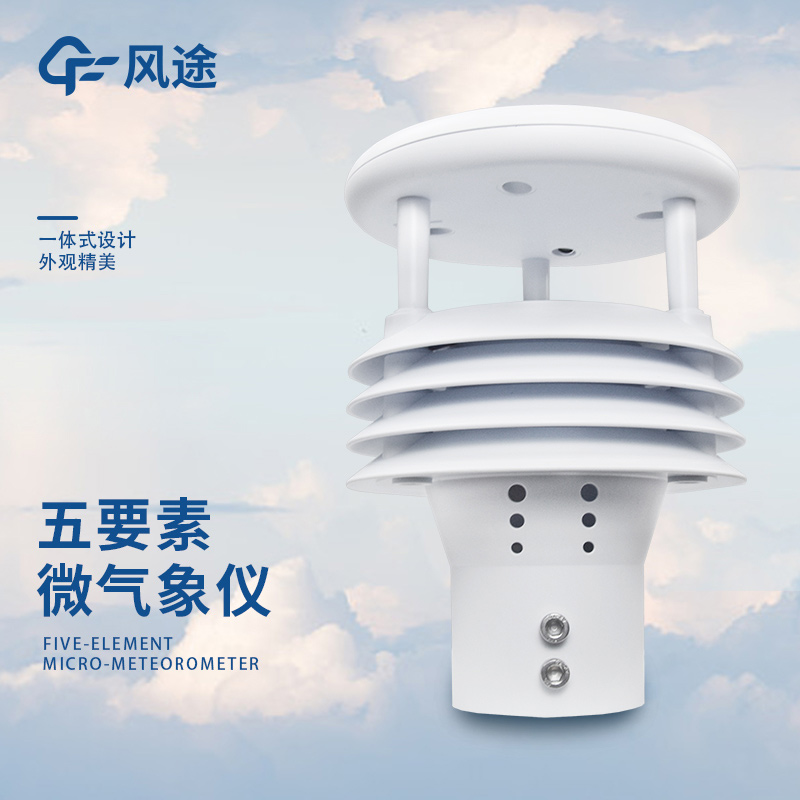Shandong Fengtu IOT Technology Co., Ltd
Sales Manager:Ms. Emily Wang
Cel,Whatsapp,Wechat:+86 15898932201
Email:info@fengtutec.com
Add:No. 155 Optoelectronic Industry Accelerator, Gaoxin District, Weifang, Shandong, China

Sales Manager:Ms. Emily Wang
Cel,Whatsapp,Wechat:+86 15898932201
Email:info@fengtutec.com
Add:No. 155 Optoelectronic Industry Accelerator, Gaoxin District, Weifang, Shandong, China
time:2024-12-03 09:57:43 source:Weather Station viewed:502 time
Industrial Meteorological Sensors play an important role in meteorological monitoring and research, and they have a rich variety of types, covering the measurement of multiple meteorological elements.
Temperature sensors are a major category. Glass liquid thermometers rely on the thermal expansion and contraction of liquid. Although they are traditional, they have good accuracy. Thermocouple temperature sensors utilize the change in thermoelectric potential, having a wide measurement range and a fast response. Thermistor temperature sensors measure temperature based on the change in resistance with temperature, with high accuracy but a limited measurement range.
Humidity sensors also have their own characteristics. Hair hygrometers measure humidity by the change in hair length, being simple but having low accuracy. Capacitive humidity sensors operate on the principle of a humidity-sensitive capacitor, with a fast response, high accuracy, and stability. Resistive humidity sensors measure humidity through the change in resistance of a humidity-sensitive material, having a low cost but slightly inferior performance.
Barometric pressure sensors include mercury barometers, which measure barometric pressure by the height of a mercury column, having high accuracy but being inconvenient to carry. Aneroid barometers measure pressure by the deformation of a metal aneroid capsule, being portable but having slightly lower accuracy. Solid-state piezoresistive barometric pressure sensors are based on the piezoresistive effect, having high accuracy and being conducive to integration.
For wind speed sensors, cup anemometers measure wind speed by the rotation of cups, being reliable and commonly used. Propeller anemometers measure wind speed by the rotation of a propeller, being sensitive to low wind speeds. Hot-wire anemometers utilize the principle of heat dissipation of a hot wire, having high accuracy but being complex and expensive.
Wind direction sensors include wind vanes, which are intuitive but have limited accuracy. Wind direction sensors based on the potentiometer principle can convert wind direction into an electrical signal. Ultrasonic wind direction sensors measure wind direction by the time difference of ultrasound, having high accuracy and no mechanical parts.
Among precipitation sensors, tipping bucket rain gauges have a simple structure and high accuracy. Siphon rain gauges can record the precipitation process. Weighing rain gauges can measure multiple forms of precipitation.
Radiation sensors include pyranometers that measure total solar radiation. Pyrheliometers focus on direct radiation. Ultraviolet radiometers monitor ultraviolet intensity.
For visibility sensors, transmissometers measure visibility by light attenuation, having high accuracy but being easily affected by interference. Scatterometers utilize the principle of light scattering, being compact and having strong adaptability.
Cloud height sensors such as laser ceilometers measure cloud height by laser reflection, being accurate and capable of monitoring dynamics. Infrared ceilometers are based on the infrared reflection principle and have a unique role under special meteorological conditions.
These Industrial Meteorological Sensors work in cooperation with each other, providing comprehensive and accurate data support for many fields such as weather forecasting, climate research, and environmental monitoring, and promoting the continuous progress of meteorological science.

Irrigation channel flow monitoring realizes continuous dynamic monitoring of water flow in irrigation channels through the deployment of various measuring equipment and data collection technologies. Based on flow monitoring data, precise irrigation plans can be formulated by combining indicators suc...
In the fields of atmospheric and tunnel environment detection, every data point is crucial for ensuring safety and the accuracy of decision - making. The FT - FT - SGT1 portable light transmittance detector emerges as your reliable detection partner.Operationally, the FT - SGT1 detector is extremely...
An air quality monitoring station is a technical system used for real - time monitoring of pollutant concentrations in the atmosphere. It can monitor air quality in real - time and give early warnings of pollution incidents. This system typically consists of sensors, data acquisition devices, data t...
A portable visibility sensor is a device capable of measuring the brightness of the surrounding environment and the visibility of the atmosphere. It usually uses laser or infrared technology to provide visibility data quickly and accurately by measuring parameters such as light scattering and reflec...